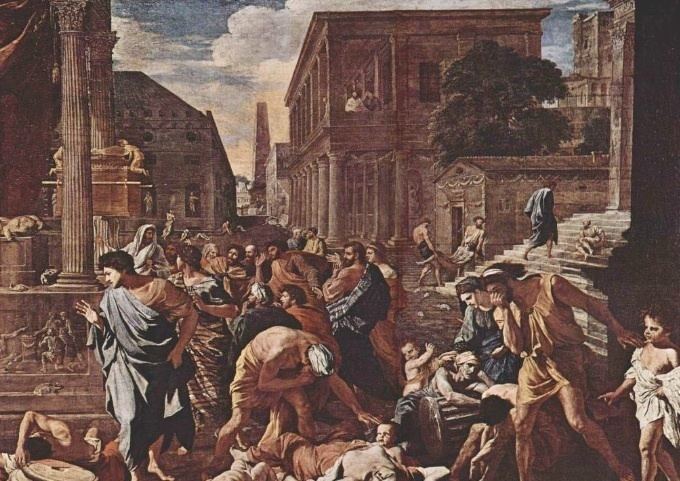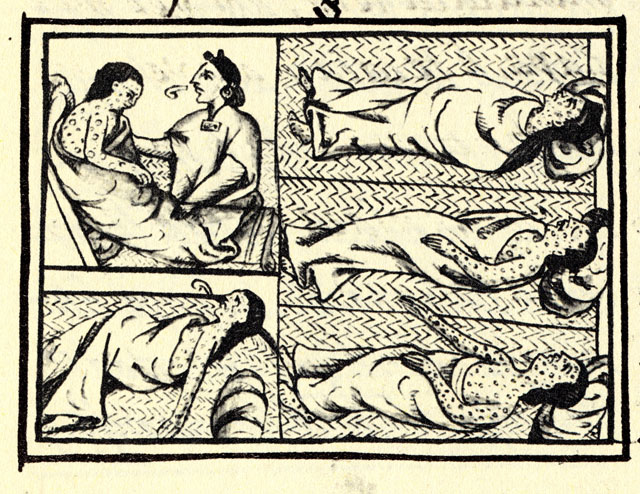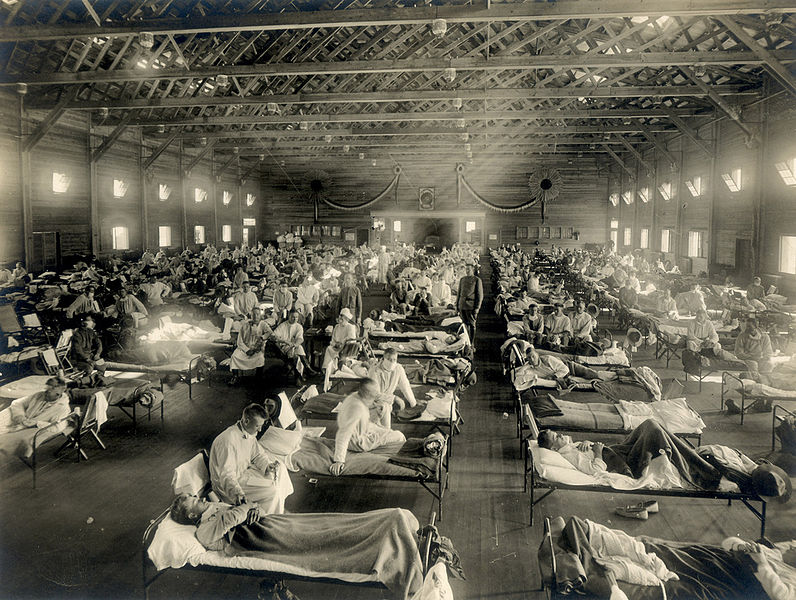Coronavirus has officially made its appearance in Turkey, putting it in the headlines and minds of people across the country — but how serious is the problem in comparison with other major outbreaks of the past?
The Antonine Plague (Plague of Galen)
The Antonine plague was an epidemic brought by soldiers returning from their eastern conquests between the years 165 and 180 AD. It was one of the first major plagues and is known to have killed roughly 2,000 people a day at its peak.
Although researchers suspect that the disease was smallpox or measles, the true cause of the plague remains unknown. The plague killed the Roman Emperors Lucius Verus and Marcus Aurelius Antoninus and caused the empire to lose around 30% of its total population.

The Plague of Justinian
In 541, while the Emperor Justinian sat on the throne in Constantinople, a plague that began in Europe first reached Egypt, then Palestine, Syria and Anatolia. Even though Emperor Justinian closed all the entrances and exits to Constantinople, the plague somehow found its way through mice in the equipment that soldiers had brought to the city.
An airborne insect called ‘Xenopsylla’, which had lurked inside the mice’s fur and were more than a millimeter small, carried a deadly bacterium called ‘Pasteurella pestis’ into the city.
The disease continued its normal course and disappeared slowly over time, but not before it killed around 40% of the population of Constantinople, one of the most populated cities of the time. The plague caused the weakening of the Byzantine Empire which suffered a massive loss of labor and soldiers and made it vulnerable to outside attacks. This eventually led to the events that radically changed European history.
The Black Death (Black Plague)
The Black Death plague, which occurred between the years 1346 and 1353, is believed to have killed between 75 and 200 million people. Although it is impossible to know the exact numbers, it is estimated that the European population has decreased by roughly 30% to 60% during these years.
The Black Death led to a questioning of religion and the church and is thought to be one of the main causes of the Reformation and the Renaissance.
Smallpox in the Americas
In the 15th century, Europeans discovered the New World. The European explorers quickly came into contact with the natives in the Americas, intentionally and unintentionally infecting them with viruses and bacteria that they had brought along with them.
Smallpox had already killed one third of Europe, but the Native Americans whose immune systems had not encountered the disease and who had no proper medicines stood no chance against it. Millions of people eventually died, around 90% of the indigenous population being extinguished. This made it a great deal easier for the Europoeans to colonize the Americas.
Cocoliztli epidemics
The epidemics in the 16th century in the region called ‘New Spain’ (now known as Mexico), are in fact several different epidemics occurred in the same period which are collectively called the “Cocoliztli epidemics.”
Today’s investigations show that the epidemics could have been caused by salmonella bacteria found in fish, and ended up killing around 15 million people between the years 1520 and 1576. This led to the end of the Mayan Civilization, and over the years it is thought to have spread from Venezuela to Canada.

The Third Cholera epidemic
There have been several major cholera epidemics in the history of civilization, but the deadliest was the third major outbreak which occurred between 1852 and 1860. The main cause of Cholera is the contamination of the drinking water, but this was not understood until during the third epidemic.
For a long period of time, human feces and other waste were poured into the water sources that were also used for drinking and cooking. India in particular faced disaster during this time.
With the massive outbreak in the 19th century, Cholera had spread all over in India, and then to Afghanistan and Russia. According to the official records, the outbreak killed 1 million people in Russia alone before reaching Europe, Africa and finally the Americas.
When not treated quickly, half of the infected people are likely to die. Although the exact number of people dying in the all cholera outbreaks is unknown, it is possible to estimate them in millions.
During the third major cholera outbreak, doctors found the cause of the disease, after which disinfecting and boiling drinking water became commonplace throughout the world.
The Third Plague pandemic
This outbreak began in China and killed around 12 million people in China and India alone between the years 1855 and 1859. It was called “the Third Plague Pandemic” after the Plague of Justinian and European Black Death.
The outbreak, which had lasted for about a century, came to the Americas on mice from the Far East. Unlike during previous plagues, modern medicine allowed the examination of this disease and the synthesis of a cure, including antibiotics.
Typhus outbreak during the First World War
The Typhus bacteria was spread widely by lice during the First World War. In Europe and Asia, more than 25 million people were infected and nearly 3 million people died as a result, particularly in the Soviet Union. Western countries understood what caused the outbreak more quickly and the measures had been taken in order to get rid of the lice. Eastern countries took action only later, which is why many more people died in these parts of the world.
The 1918 Spanish Flu outbreak
In the years following the First World War, the H1N1 influenza virus, which had infected around 500 million people, caused the deaths of between 50 and 100 million people worldwide. This number is more than the total number of people killed in the First and The Second World War combined.

The 1957 Asian Flu outbreak
This Pandemic is thought to be a result of the Influenza-A virus, which began in China and mutated in ducks and passed on to humans. The so-called Asian Flu disease killed up to 4 million people. The outbreak was prevented by vaccinations, with some 40 million being vaccinated within a single year.
HIV (AIDS) virus
The first example of the HIV virus, which is thought to have been passed from the apes to humans during the mid-20th century, has been traced back to Congo in 1959. However, its diagnosis and classification were only made in the 1980s. There is still no effective cure to the virus, which has taken 36 million lives in the last 30 years. The only way to handle the virus has been to take precautions from getting it in the first place, or to take medications one’s entire life.
The Hong Kong flu
The Hong Kong flu was seen between 1968 and 1969 and is estimated to have killed around 2 million people.
Ebola
The Ebola pandemic first began in West Africa between 2013 and 2016, and has led to more than 11,300 deaths. The West African Ebola pandemic began in Guinea in December 2013, and eventually spread to the West African countries such as Liberia and Sierra Leone. The virus infected around 28,616 people before coming to an end in June 2016. This pandemic was recorded as the deadliest Ebola pandemic in history, in terms of the number of infected and number of deaths.
This article was originally published in the Turkis scientific magazine, Bilim ve Ütopya (bilimveutopya.com.tr)









Leave a Reply